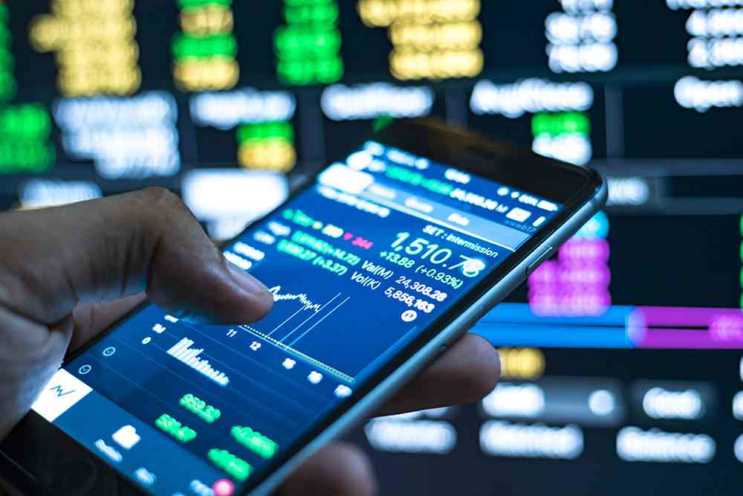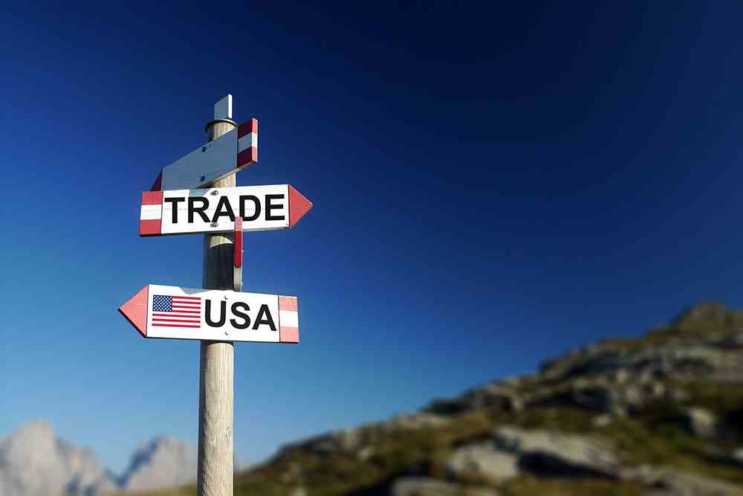Stocks across the globe had their worst day in 8 months on Wednesday, with tech shares worst hit, coupled with higher interest rates, spooking all types of investors. We’ve summarised why the markets took a battering this week.

Interest rates
It’s no secret the Federal Reserve is raising interest rates. What that means is it’s expensive for companies to borrow, hurting bottom lines and turning stocks into a less attractive investment.
“Interest rates are rising because economic data has been positive,” explains Paul Hickey, co-founder at Bespoke Investment Group based in New York. For one, higher interest rates mean bonds pay out bigger streams of interest to investors, which makes fixed-income investments a legitimate alternative to stocks. In short, “there’s more competition for stocks,” Hickey commented.
Higher interest rates raise borrowing costs for consumers and companies, car loans and mortgages become more expensive and companies have a harder time tapping the debt market. “Clearly, higher rates are not good for housing or auto sales,” says Ed Yardeni, chief investment strategist at Yardeni Research. And if sales of these big-ticket items slow, so does the broader economy.
A bounce from Trump’s pro-business policies
After nearly a decade of historically low interest rates and slow economic growth, the U.S. economy is picking up speed. Trump claims to take the credit from his policies but such initiatives such as tax cuts and less regulation of businesses have helped corporate América. The results are the economy grew 4.2% in the second quarter, its fastest pace in four years. And the job market is robust, with the September unemployment rate of 3.7% the lowest in nearly 50 years.
In short, there’s no longer a need for cheap money and risk-free borrowing for many. The problem potentially is the economy will get too hot and cause both price and wage inflation to spike, which hurts the buying power of consumers.
The US dollar ($) has become stronger making corporate profits received in other currencies and reported in USD become more, if not slightly misleading, more substantial.
Overvalued (tech) stocks and equities

Linked with higher rates, is the well-known issue of overvalued growth stocks, which includes tech stocks. “The lure for these stocks is growth in earnings down the road, but when interest rates are higher, the future value of those earnings streams declines,” Hickey continued. On Wednesday, video streamer Netflix fell 8.4%, Facebook tumbled 4.1% and Apple fell 4.6%. Amazon cooled enough to take double-digit billions off its market cap. The equities market has been on a nearly 10-year bull run with many companies valued with 25 times multiples on earnings. This flash crash highlighted how much value and growth is built into these valuations and that they could be overinflated and not worth what people think.
Inflation
One of the biggest concerns for all investors is inflation, defined in this context as “a general increase in prices and fall in the purchasing value of money,” but investors got some good news on Thursday. Just before US markets opened, the September reading of the consumer price index showed that prices rose by just 0.1% during the month, below expectations.
After the release, the mood on the floor of the New York Stock Exchange almost instantly lightened. The reality will be that the US Federal Reserve will be forced rethink increasing interest rates at a faster pace than expected.
China/US trade war

One of the biggest reasons, the sell-off has been gathering strength for about two weeks now lead by the Asian markets. Asian markets have been gradually falling the last 2 weeks mainly because of concerns about China’s growth rate. More importantly, its linked to the mutual hike in tariffs between the US and China and the impending trade wars. New tariffs imposed by Washington on $200bn of Chinese goods sparked concerns about a potential trade war between the two giants. China have retaliated and there is no evidence suggesting more tit for tat political sparring could continue in other ways. China and USA are the world’s top two economies and the overspill of less than harmonious trade could have full global ramifications.
As mentioned above, tech stocks have also been caught in the trade fight with China, as Trump’s tough stance on Beijing is causing disruptions in their supply chain. A lot of manufacturing, distribution and parts are either bought or developed in China for these US founded companies. Technology companies such as Facebook, Twitter and Alphabet are also facing intense regulatory scrutiny from the U.S. government.
“Tech companies are in harm’s way because of the trade war with China, in addition to concerns about rising interest rates,” says Chris Zaccarelli, chief investment officer at Independent Advisor Alliance.
Italian debt crisis
It started from a political point of view, which has failed to have a proper government since March. Italy’s politics are in disarray, after a decision by the country’s president, Sergio Mattarella, effectively blocked a populist coalition between the anti-establishment Five Star movement and the anti-immigrant League. September 2018 was when financial issues were compounded when the 2019 budget revealed deficit spending is to rise to 2.4% of GDP. International fears are contributing to the slump too. Rising fears over continued growth in Italian debt given the fiscal expansion planned by their government means that eyes will also be trained on Italian yields, with the 10-year jumping from 3% to 3.5% cent in the past fortnight. Italy’s 10-year bond yields, a measure of the country’s sovereign borrowing costs, breached the 3% barrier on Tuesday, the highest in four years up from 1.8% at the start of the month.
Traders, therefore, have been marking down the price of Italian debt and selling it because they think the chance they might not be repaid (for instance if Italy crashes out of the eurozone) has risen.
The Italian stock market across the board was also down 3% on Tuesday, and at aa 13% low for the whole month. Despite a consistently, relatively unstable political outlook, this has to be kept in context. The Italian stock market is still only back to its levels of last July, after experiencing a strong bull run since later 2016. The EU needs to stick together and if they can save Greece, its likely Italy will be stabilised in time with the right measures.
Brexit
The European Central Bank is bracing to withdraw quantitative easing in December, while UK markets have been weighed down by the uncertainty of Brexit negotiations. This has been felt in the currency, widely acknowledged as a clean way of understanding how an economy is fairing. Brexit has been bungled together by all accounts but as of this week, so good news came about. Reports surfaced that a deal “looks likely” and it should be just in time. The Irish border (or lack of it) is the only major issue it seems unsolved with both sides holding their ground. In general, the unknown of a post-Brexit world for the EU and UK is unsettling and markets don’t like that one bit.
IMF comments
Warnings from the International Monetary Fund this week about the impact of a trade war on global growth are also another variable into the mix. The IMF warned that “a further escalation of trade tensions, as well as rising geopolitical risks and policy uncertainty in major economies” They continued that there could be a “sudden deterioration in risk sentiment.” Concerns heavily linked with the US economy and the pending bear market means the effects will be felt in Europe. It’s typical that the IMF rescues failing countries finances such as Greece as recently as 2015. The memories are still fresh so anxious comments are listened to by the markets.
The stats from the world’s biggest economy
- Dow Jones Industrial Average closed 831.83 lower at 25,598.74, its worst day since 8th Feb, when it fell 1,033 points. The Dow also closed below its 50-day moving average for the first time since July 6.
- The S&P500 dropped 3.3% to 2,785.68, marking its biggest one-day decline since Feb 8, when it fell 3.8%.
- Nasdaq plummeted 4.08% to 7,422.05. Wednesday was the tech-heavy index’s worst day since June 24, 2016, when it dropped 4.12%. Technically, it broke below its 200-day moving average for the first time since June 29, 2016.
- The Cboe Volatility index (VIX) widely considered the best gauge of fear on Wall Street, surged 43.9% to 22.96, its highest level since April 6.
- All 11 S&P 500 sectors closed lower, with tech leading the charge. Tech fell 4.8%, turning in its biggest one-day drop since Aug. 18, 2011, when it lost 5.3%.
- Tiffany and Twitter were the worst-performing stocks in the S&P 500, dropping 10.2% and 8.5%, respectively.
- More than 330 of the 505 stocks in the S&P 500 closed more than 10% below their 52-week highs. Over 140 of them ended the session in bear-market levels, or down more than 20% from their one-year highs.
What should the investors do?
For average private investor: Don’t panic. The reason why many PIs lose money is they buy on up days and sell on down days. These sell-offs are not unusual, and they do tend to happen towards the end of the year, although by many measurements it was a significant pullback. In general, the world economy is still growing, but the stock market is a little different. It’s a measure of sentiment but it tends to overreact to events and people are either constantly excited or constantly fearful. Chris Bailey, a European strategist at Raymond James, says:
“Because it hasn’t happened for a little while, this worries people. What we’re seeing is a few key global events adding up, investors getting nervous, and then shares go down. This is a normal market reaction, it’s just more extreme because there are many events happening all at once.”
Could this be the beginning of a correction?
There’s always a chance that the sell-off can become a constant downtrend but it’s not a bear market, it’s just a price correction. No one knows a bear market is coming until you are heavily in one. A downturn won’t become a bear market until its continuous. The 10-15% drop turned out instead to be a good buying opportunity for investors as on Friday markets recovered but not enough to cover the earlier losses.
Should we panic?
“Sure, investors feel nervous, but this is not the time to panic and sell,” advises Thorne Perkin, president of Papamarkou Wellner Asset Management in New York. “We don’t view this as a psychological shift but an overdue sell-off.” The current market decline “won’t be fun,” Perkin adds, “but this sell-off will end and a strong economy will carry us through the end of the year.” That’s financial market speak for “sale now on.”